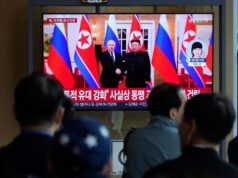India Rightly And Confidently Rejects RCEP In its Current Format

India has decided against joining the world’s largest free trade area — the Regional Comprehensive Economic Partnership (RCEP) till further negotiations. At the centre of this is the Chinese keenness to safeguard its trade growth by accessing newer markets in face of current American and European trade restrictions. Even India seeks the same type of growth. So naturally things can move only on reciprocal basis.
Another point is that many economists believe the decision to not join the RCEP will protect the economy from cheap imports, particularly from China, thereby saving millions of jobs in the time of economic downturn.
More importantly, at this current economic juncture, India must insist that both trade and Services have to be clubbed together. China and others may be strong manufacturers but then India is a very strong service provider.
So exchange of both Goods and Services needs to take place. Also allowing huge tariff cuts and opening up the markets to imports would be detrimental to the health of the country’s domestic industry. At present, the world economy is in the midst of a severe slump and naturally it affects India too.
India’s GDP grew at a six-year low of 5 per cent in the June quarter because of a sharp deceleration in the manufacturing sector. Most global and domestic agencies have trimmed their growth projections, saying economic growth is likely to remain below 6 per cent for 2019-20.
It is worth noting that India’s trade deficit with the RCEP nation is USD 105 billion, of which China alone accounts for approximately USD 54 billion at the end of 2018-19. Quite a few commentators and media columnists were worried that the RCEP deal would widen the country’s burgeoning trade deficit gap with China.
Around 50 per cent of the imports from China comprise high-tech products such as telecom equipment. The top items of export to China from India were petroleum products, cotton yarn, plastic raw materials and so on.
Plus, Beijing does not provide a level playing field for goods that they could export, especially in areas such as information technology, pharmaceuticals among others. Therefore India has increased import duties on several items to protect its industry against Chinese imports.
“India’s decision to not join RCEP at this point in time has rightly taken cognizance of the concerns of the domestic industry which, otherwise would have been subjected to a potential threat in terms of a surge of imports from other RCEP countries (particularly China).
At a time when India is working towards developing its manufacturing competitiveness through initiatives such as ‘Make in India’, the decision to stay out of RCEP seems to be in the national interest,” observes Dr Niti Bhasin, associate professor of international business at Delhi School of Economics, University of Delhi.
It is worth mentioning here is that India’s past experience with free trade agreement (FTA) is not encouraging. To put this in context, data demonstrated that India’s trade deficit with ASEAN from less than USD 8 billion in 2009-10 climbed to about USD 22 billion in 2018-19.
Besides, the RCEP deal would have forced India to cut duties on 90 per cent of its tariff lines. It could have flooded the markets with cheap Made-in-China goods, placing the entire domestic industry in jeopardy. A report suggested that the revenue department estimated the tax loss may be around Rs 60,000 crore for the RCEP agreement.
“The government has done the right thing by moving away from the RCEP. India has preferential or free trade agreements with most of the members of RCEP. India is negotiating separate trade agreements with Australia and New Zealand. Therefore, signing of RCEP means opening up trade relationships mainly with China,” says Parthapratim Pal, professor at Indian Institute of Management (IIM) Calcutta.
It is no exaggeration to say that had India joined the RCEP in its present form, it would have certainly poured cold water on the government’s flagship scheme ‘Make in India’. The government, however, should raise the competitiveness of Indian industry and gradually bring down high tariff regime.




